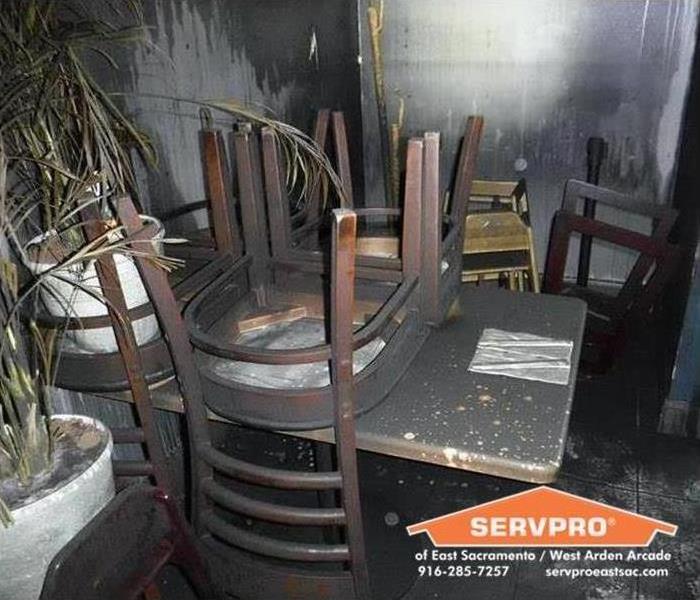Elk Grove Fire Cleanup
9/4/2020 (Permalink)
Fires. One of nature's most destructive processes. Fires are useful, they allow us to do things like cook food and drive cars when controlled. But if they are left for one second in an uncontrolled environment, fires cause immense devastation. So much devastation that there is a whole industry that revolves around the reparations from damage caused by fires.
What do you see in a fire damage?
- Dry smoke residue is caused by high heat, fast burning fires fueled by wood and paper. This is what you usually think of when you imagine ash and soot--powdery and dry. The fine powder is often simpler to clean since it is easy to wipe off. However, it can fall into cracks and porous surfaces, and while the soot may be hidden from view, the smell will remain.
- Wet smoke residue is caused by low-heat, slow-burning fires from burning plastic or rubber. This black smoke leaves behind an often thick and sticky residue with a strong odor. Wet smoke residue smears easily, which often makes cleanup more difficult.
- Protein residue is left behind after the evaporation of organic material, usually food. The residue is almost invisible. However, it discolors varnishes, paints, and finishes. It also gives off a strong, offensive odor.
- Water damage can be caused by any relief efforts to put out the fires. The water can be introduced through firefighting or smoke detecting water sprinklers. It is so important to dry out the structure as well, because if it is left unattended mold will grow.
It is so important to remediate as soon as possible in order to prevent secondary damage, whether that be mold damage or ash that set into the structure.




 24/7 Emergency Service
24/7 Emergency Service
